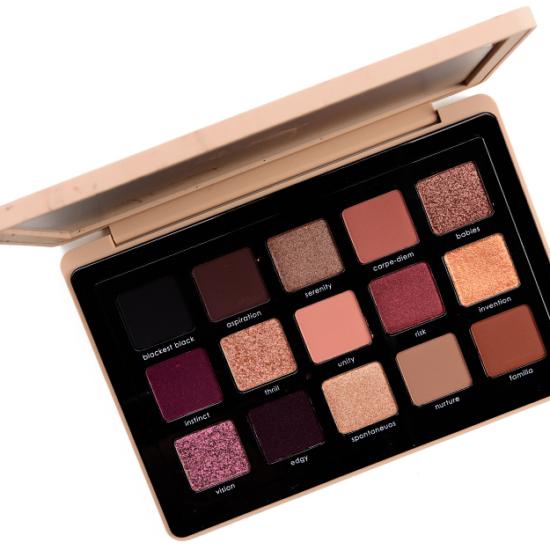What makes an eyeshadow palette cohesive to you?
The undertones and depths need to have a mix that works together, so enough mid-tone shades to balance out deeper shades, enough difference in depth and undertone between shades to create gradients without being too close together.


I really don’t like it when there is a random pop of colour for some reason. Unless it’s something that clearly contrasts the other colours, and can be used as like a liner or inner corner highlight. I need 2-3 eyeshadows of a similar tone to work with it. Like the new ABH palette with a random pastel lilac, what am I going to do with that!?
Agree! the importance of midtone shades. I find with aging skin/hooded lids, I barely use dark shadows other than a very small smidge in my outer corner so midtones are king in my book and yes, want discernible differences in depth and texture.
You said it best! I’ll add that for me, I need to have what I just said in another comment to your post on the ND Dream palette; I also need the palette to have at the very least the lightest color that enables me to highlight and do my under brow area, the darkest color that I can a use shade with (which ND does VERY well), a blending color (to help merge colors) and a pop color (for contrast). All of these, as you explained, in tones that keep it all “blendable.” Rarely, can I work with two colors (but I have done so in a pinch and with the right tones), so most palettes have to have a minimum of four eyeshadows to begin to be a “cohesive” palette for me.
Right? If I am going to the trouble to do an eye look. I’m definitely not settling for 2 shadows.
My skintone is quite light so for a palette to be perfect for me, it has to contain a quite light highlight/inner corner brightening shade, preferably with a bit of sheen. I’m a neutrals gal all the way – cool toned or not too warm neutrals – but do like having a subdued pop of colour (green, deeper blue like MAC Birds&Berries or a purple) for a bit of interest.
That as soon as I look at it, I’m envisioning multiple looks that are solidly doable. This would entail the inclusion of mid-tone matte (or matte appearing satins) transition shades, deeper shades that I can use for defining my non-existent crease to create a crease, at least one inner corner highlight shade that’s preferably metallic or super shimmery, and definitely some reflective and even duochrome shades for my mobile lid. And, depending on the size of the palette: I can get either an almost entire look using it for anything that’s 6 pans or less, and at least several from anything 9-20 pans. Of utmost importance, is that all of the shades all work together and just make sense to me at first glance!
A cohesive eyeshadow palette for me is one that contains a variety of lighter aand mid tone neutral shades, preferably no mattes or black, pink, red or orange shades. I would like to be in a satin, soft shimmer, metallic or pearl kind of finish. A pop of green, navy blue would be fine too.
For me, the color story and finishes have to work well on their own, with most of its colors working together in any combination. The more this is true for a palette, the more cohesive I’ll consider it. I like unconventional color combinations and think I’m pretty broad on what I consider cohesive.
Usually, most of a palette will be the same undertone, or a similar color family with different undertones and/or finishes, or different coordinating colors in a similar undertone.
I don’t mind pops of color, nor do I think they automatically make a palette incohesive. Oftentimes a pop or two (regardless of if their undertones match the rest of the palette’s) elevates a palette without subtracting — and maybe even adding to — its cohesiveness. They may be the bridge that makes the some of the more subdued shades work together.